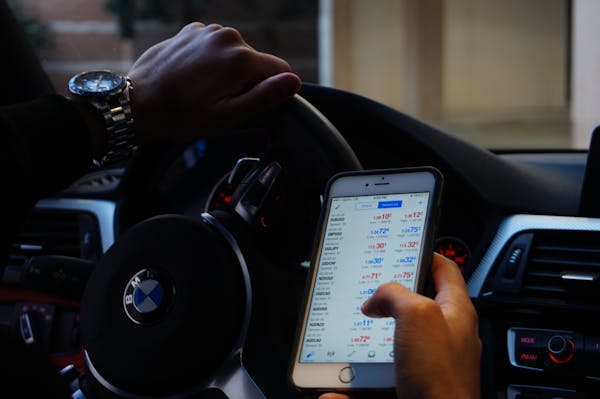Automated trading is moving fast, and if anyone hasn’t noticed, Forex robots are making a significant impact, particularly in emerging markets. These software algorithms are handling some of the complexities of trades that previously required intense human involvement, often outperforming manual strategies. Let’s talk about how these robots are changing the game, what their role is in emerging economies, and why developers should keep their eyes on this rapidly developing trend.
Understand this: Automation is no longer just a perk—it’s a necessity. The more efficient your trading tools are, the greater edge you have. In the fast-paced world of Forex, this edge is crucial.
The Rise of Forex Robots
To understand the impact of Forex robots, you first have to know what they are. Simply put, Forex robots are automated programs designed to perform trades on the foreign exchange (Forex) market. They use pre-defined criteria and mathematical algorithms, making calculations faster than any trader could achieve manually.
This allows traders to step away from monitoring screens all day. In essence, the robot makes the decision when to buy or sell, based on real-time analysis of the market. This isn’t hidden in some tech bubble – it’s already happening across emerging markets, where traders are embracing these tools to improve accuracy and reduce human error.
Emerging markets aren’t just playing catch-up. They’re adopting these tools as they offer a perfect solution for resource constraints and the need for rapid adaptability to changing market conditions.
What Makes Automation So Appealing?
So, what we’re seeing isn’t a decline in professional traders—it’s professional traders leveraging automation for better returns.
Speed and Precision
Forex robots don’t hesitate, they execute trades based on logic and numbers, not emotion. The cold, calculated precision of automation ensures that a bad day in trading because of human error becomes far less common.
Multitasking
These robots can handle multiple trades simultaneously, which is something human traders can’t do effectively at scale. Whether it’s high-frequency trading or monitoring more than one market, they always keep up.
Emerging Markets: The Perfect Ground for Growth
Forex robots offer something particularly crucial to emerging markets: efficiency. But it’s more than that. It’s the way these markets are structured that makes robot trading valuable.
Why Emerging Markets?
Emerging markets are catching the attention of global traders for their potential—usually with faster growth rates than developed markets. Trading in these markets comes with added volatility and risk. That makes it especially attractive for Forex robots, which thrive in high volatility environments. Given their precision and speed, they navigate large price swings efficiently.
Then there’s the regulatory aspect. While developed markets have tighter regulations, some emerging markets have a bit of breathing room, allowing these automated tools to enter without excessive restriction. With fewer bureaucratic headaches, developers are able to build, implement, and refine their Forex robots faster than in overly-controlled environments.
Increased Internet Penetration
We have to talk about internet accessibility here. A decade ago, deploying such technology in emerging countries would have been an afterthought because strict infrastructure limitations made it a challenge. Today, emerging markets have rapidly increased their internet penetration, especially in urban areas, allowing Forex robots to work effectively through cloud-based platforms and mobile apps.
Now more than ever, retail traders in emerging markets can access advanced tools, including Forex robots, from mobile devices. There’s no longer a gap between what’s happening in developed economies and what’s available to the rest of the world.
Simplified Platform Integration
Integration matters. While in older days, implementing such technology took massive amounts of coding and specialized knowledge, today’s Forex robots can easily work within pre-existing platforms. Metatrader 4 (MT4) and Metatrader 5 (MT5) are popular ones that support automated trading. Traders in emerging markets can start leveraging these tools with minimal setup time.
Breaking Down the Features in Forex Robots
Let’s dive into what actually makes these robots work. Sure, they’re fast, but what are they actually doing in the background? Most traders don’t care, they just want results, but as developers and traders wanting to stay ahead, you should care. So pay attention to these functions—they’re game-changers.
Decision-Making Algorithms
These are at the core of every Forex robot. They assess market conditions, analyze trends, and make trade decisions following specific rules set by the trader or the software itself. The most common algorithms follow technical indicators like moving averages or RSI (Relative Strength Index), but more advanced versions incorporate machine learning to predict trends before they happen. Yes, before they happen. Instantly reacting, adapting. This is where simple automation ends, and AI-driven strategies start to take hold.
Risk Management Automation
No serious trader makes decisions without considering risk, and Forex robots are the same. They’re often equipped with risk management tools, such as stop-loss orders and take-profit functions. These ensure that trades exit at pre-set levels, preventing unnecessary losses. No emotion, no flinching. Just execution.
Real-Time Monitoring
Forex isn’t a 9-to-5 job. The markets move 24/7, and it’s impossible for one person to be glued to a screen around the clock. Forex robots eliminate this issue by working round the clock without fatigue, engaging in real-time monitoring and instant execution on opportunities as they arise—whether that’s at 2 AM or in the middle of a high volatility news cycle.
Systems Adaptation and Self-Optimization
When systems adapt to market changes in real-time without the continuous need for human interaction, it’s a clear advantage. More sophisticated Forex robots go even further, learning from previous market patterns and adapting their strategies accordingly. This means that as the market evolves or new challenges arise, the system optimizes itself without user intervention.
Developing Forex Robots for Emerging Markets
No, this isn’t some exclusive project reserved for a handful of well-funded organizations. Forex robot development is far more accessible than it was just a few years ago, all thanks to advancements in development frameworks and programming languages. Python, for instance, is a go-to for Forex robot development for its simplicity and powerful libraries. It’s open, free, and allows quick iteration—everything needed to survive the chaotic market environments.
Steps to Consider When Building a Forex Robot
- Choose a Strategy: Do you want a breakout strategy? Trend following? This matters.
- Base the Algorithm: Once the strategy is selected, build your logic. Set rules that the robot will follow religiously.
- Backtest Data: Testing your robot against historical data is crucial. It lets you confirm if the system performs well under different market conditions.
- Optimization: Keep improving the algorithms, make them cleaner, and update them as necessary to ensure they remain relevant to current market dynamics.
Conclusion
Forex robots aren’t just a tech fad. They’ve grown into an essential tool for traders worldwide, especially in the fast-moving environments of emerging markets. These automated strategies bring speed, precision, and adaptability—traits increasingly essential in volatile, unpredictable market conditions. Whether you’re a developer or trader, understanding how to harness the power of Forex robots could be one of the most valuable skills to master in the coming years.
No waiting. No second-guessing. Just automated, strategic execution.











